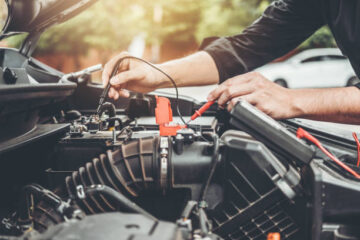Are you struggling with your outboard motor trim? You’re not alone!
Many boaters encounter various trim-related challenges that can hinder their time on the water. Understanding these issues is crucial for maintaining peak performance and safety.
In this blog, we’ll explore the six most common outboard engine setting problems. More importantly, we’ll provide simple solutions to fix them. Get ready to enjoy smoother rides and optimal control with your boat!
Let’s dive into these outboard motor trim issues and how to resolve them effectively. Keep on reading!
Table of Contents
1. Trim Not Responding
One of the most common issues with outboard motors is when the trim does not respond to adjustments. A faulty trim switch or an electrical issue can cause this.
If you find that your trim is stuck in one position, first check the trim switch for any signs of wear or damage. If the switch appears functional, it may be necessary to look into the electrical connections or fuses.
2. Hydraulic Leaks
Hydraulic leaks can severely impact the functionality of your outboard motor trim. These leaks may occur in the hydraulic lines or fittings, causing a loss of pressure essential for trim adjustments.
Regularly inspect the hydraulic system for any signs of fluid leakage. Addressing leaks promptly will ensure reliable performance and prevent further damage.
3. Trim Stuck Up or Down
Sometimes, an outboard motor’s trim might get stuck either fully up or fully down. This can occur due to lack of use or corrosion within the motor trim adjustments system.
If your motor remains in one position, first try to manually free it by examining the trim rams and ensuring that there is no debris obstructing movement. If the problem persists, professional assistance may be required to service or replace the trim components.
4. Trim Gauge Not Working
The trim gauge provides valuable feedback on your motor’s trim position, allowing for optimal adjustments while cruising. When this gauge is not functioning properly, it can lead to inefficient trimming and an uncomfortable ride.
The issue could be linked to the gauge itself or a disconnect in the wiring. Testing the gauge and connections is essential to determine whether replacement or repair is necessary.
5. Voltage Supply Issues
An inadequate voltage supply can lead to various trim-related problems, including sluggish response times or complete failure to operate. If the trim is slow to respond, it could be due to low voltage coming from the battery or alternator. Conduct regular checks on the electrical system to ensure adequate voltage levels.
6. Improper Trim Settings
Improper trim settings can greatly affect your boating experience, causing issues like porpoising or increased bow lift. Recognizing the best trim angle for the conditions you are in is vital for effective handling.
Adjusting your trim in response to weight distribution, weather conditions, or water conditions can lead to a much smoother ride. For more detailed guidelines on optimal trim settings, you can click this page for Yamaha trim motor.
Mastering Outboard Motor Trim for Optimal Performance
Taking care of your outboard motor trim is important for a great boating experience. Regular maintenance and knowing common issues can help your boat perform better on the water.
By figuring out problems early, you can save money on repairs and stay safe. It’s also key to have the right trim settings for better navigation and comfort.
Always pay attention to your motor’s trim parts. With some attention and care, you’ll be all set for many fun adventures ahead!
Did you like this guide? Great! Please browse our website for more!




